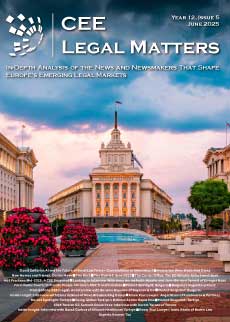The total consumption of medicines increased by 5% in 2021 compared to 2020. In financial terms, that is an increase of HRK 9.88 billion (or 17.4%) compared to 2020. Prescription-only medicines accounted for 92.9% of all consumption, while over-the-counter products accounted for 7.1%.
The Croatian reimbursement system splits the reimbursed medicines held by the Croatian Health Insurance Fund (the reimbursement body) into two lists, A and B. List A medicines are wholly reimbursed, so the patient receives these medicines free of charge. List B medicines have a higher price and are subject to a co-payment. Co-payment is either covered by the patient themselves or by complementary (additionally purchased) health insurance.
Steps taken before or after the launch of a generic product on the market may impact a proprietary product’s price and eventually lead to its drop. The proprietary product (PP) is impacted by the generic one, and the reimbursement status of the PP may change as a result.
Steps prior to launch are pricing and reimbursement. These are performed in three phases. In the first phase, the pricing phase, the Agency for Medicinal Products and Medical Devices sets a maximum permitted wholesale price for medicines (and, exceptionally, a price above the maximum permitted). That price is often referred to as an “input” or “orientation” price. In the second phase, the reimbursement phase, the Health Insurance Fund (HZZO) sets the price of a medicine in the reimbursement system, i.e., the price the HZZO will be paying for the medicine. That price is often referred to as a “final price”. In the third and final phase, the HZZO performs a pricing harmonization by internal pricing referencing:
When a generic product reaches the second (reimbursement) phase, if the generic is a “first” generic product, its price cannot exceed 70% of the price of a PP. If the generic product is a “new” generic, its price cannot exceed 90% of the price of the first generic. If the generic product is a “subsequent” new generic, its price cannot exceed 95% of the price of a medicinal product of the same non-proprietary name. This system is often referred to as a “cascade system” because of the gradual price drop.
In the third, internal pricing harmonization phase, the price of the PP is the most affected by the price of a generic. In this phase, the HZZO performs pricing harmonization once a calendar year. The purpose of this process is to harmonize the prices of all medicines (PPs and generics) within a reference therapeutic group and/or subgroup of medicines (“therapeutic harmonization”) and to level out the price of PPs and generics. Pricing harmonization by internal pricing referencing is performed for both hospital-only medicines and prescription-only medicines.
The reference therapeutic group and/or subgroup of medicines is decided upon by the Management Board of the HZZO. The HZZO then monitors the net price of the medicines within a single reference therapeutic group and subgroup. In the case of price differences between prescription-only medicines within the single reference therapeutic group and/or subgroup, the HZZO will standardize the price to the reference price. The reference price is determined based on the medicine that accounts for 5% of the market share within the same reference group, or 10% of the market share within the same reference subgroup and has the lowest price at the same time. That price becomes the reference price against which prices of all other medicines within the reference group and/or subgroup will be leveled out. All prescription-only medicines that have prices beyond the reference price must be leveled out with the reference price in a manner that the difference between the then-current price and the reference price is paid by the patient in the form of a co-payment.
Should a pharmaceutical company refuse to accept the adjustment, it runs the risk of the medicine being de-registered from List A.
Croatia is currently amending its rules on reimbursement and the “cascade system”. These amendments are still under discussion and subject to a currently ongoing public debate – but are likely to result in a further drop in medicine prices. Should they be accepted, pharmaceutical companies will face, in addition to growing inflation, sky-high energy prices, and constantly increasing raw material prices, a new challenge: the anticipated drop in medicine prices.
By Marija Musec, Partner, and Dora Mrsic, Associate, CMS
This article was originally published in Issue 9.11 of the CEE Legal Matters Magazine. If you would like to receive a hard copy of the magazine, you can subscribe here.

















